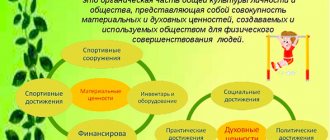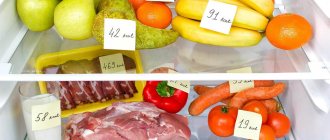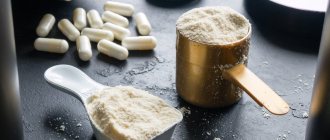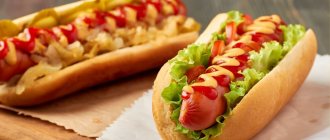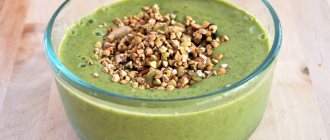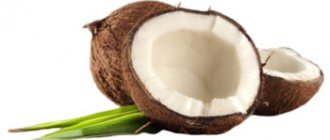The Paleo diet became the most popular diet of the early 2010s, with many athletes, fitness enthusiasts, and even people who previously weren't particularly interested in nutrition believing that hunter-gatherer-style eating was the way to stay lean and healthy. Should we return to the diet of our ancient ancestors to live better lives?
Criticism of the paleo diet and controversy were inevitable. Many are not ready to give up grains, milk and other foods prohibited by paleo adherents. The basic principles of the diet go against traditional ideas about nutrition. But in this article I'm going to look at one of the main ideas of the Paleo diet:
Our genome is not fully adapted to the foods that appeared in the human diet after the agricultural revolution. Therefore, we must eat the foods that our Paleolithic ancestors ate.
It’s unlikely that anyone would argue that the Paleo diet is a healthy diet. I am a big fan of using evolution as a guide in all aspects of life, and I truly believe that we cannot understand the impact of food on humans without studying history and how humans have eaten over millions of years of evolution.
But this does not mean that we should copy the diet of our ancestors in order to be healthy and live long. It is unlikely that an economist or engineer who studies the history of their business will think that it is necessary to return to the old ways of doing things. Learning from the past is an effective way to find out what works and what doesn't and use the lessons learned to grow.
What is the paleo diet
Obviously, there was no one-size-fits-all Paleolithic diet for everyone. The diet of both ancient and modern hunter-gatherers depended on many things: geographic location, season, climate, etc. Therefore, different tribes ate differently. But there were also common features.
The classic paleo diet consists primarily of seafood, meat, eggs, vegetables, fruits, mushrooms, roots, herbs, nuts and seeds. It is generally accepted that grains and legumes were not consumed by our ancestors, as were dairy products, potatoes, refined salt, refined sugar, processed oils, so all of these are ruled out.
It's important to mention that the modern approach to the paleo diet has changed a lot over the past decade. While some "paleo advocates" still adhere to the original, "clean" diet, many experts (Mark Sisson, Chris Kresser) now look to the paleo diet as the starting point for healthy eating in the modern world, and recognize that that some "forbidden" foods can be part of a healthy diet.
When we begin to understand that hunter-gatherer diets can be used as a template rather than a strict set of rules, most people accept that this is a good idea.
Positive sides
A huge number of people who tried it on themselves liked the result, since it suits almost everyone. This diet gives the body a huge boost of energy and strength. There are enough of them for the whole day. The foods allowed for the diet are so nutritious that they do not require additional snacks or vitamins.
According to doctors, such a diet has the following positive aspects:
- Safe use for almost all categories of people, but for certain diseases (kidney, liver or stomach) it is worth consulting with a specialist.
- The foods that make up the diet contain a huge amount of nutrients and vitamins, which are required for the normal functioning of the body.
- The diet requires the consumption of large amounts of water.
- Eating according to the paleo principle involves the complete exclusion of harmful additives from the diet.
- Products may only be consumed raw, stewed or steamed.
This is from a medical point of view, but there are general benefits.
- There is no need to constantly count calories, undereat or overeat.
- The body quickly gets used to this type of nutrition and the desire to eat buns or other prohibited foods disappears.
- There are no restrictions in volume or time. The usual restriction of not eating after six does not apply here. You also won’t need to monitor portion sizes and intervals between meals.
Paleo Diet Ideas
The lifestyle of primitive man contributes to a normal phenotype
Phenotype is a set of biological properties and characteristics of an organism, formed in the process of its individual development.
The main idea of paleo-ideology is that a primitive lifestyle and an appropriate environment contribute to a normal phenotype, and that the mismatch between our genes and the modern industrial world is the main cause of the diseases of civilization.
Although we do not have data to say for sure, it is believed that Paleolithic man was healthier and did not suffer from these diseases, despite the fact that his average lifespan was shorter: harsh living conditions, climate, famine, infant mortality and death from accidents it was greatly reduced.
Several studies of modern primitive tribes over the last century have shown that hunter-gatherers, uninfluenced by Western lifestyles, are objectively very healthy and do not suffer from cancer, cardiovascular disease, diabetes, or obesity (,).
They eat differently and have different lifestyles, but there are some common points. For example, adequate physical activity (with some exceptions), a paleo diet, enough sun (with some exceptions), “microbial exposure,” and low exposure to pollutants and toxicants. So diet is just one factor.
We didn't have enough time to adapt to agricultural products
Human genes were selected primarily during the Paleolithic era, and although our lives are very different from those of cavemen, our general biology and physiology have changed little in the last 10,000 years (, ,). As a result, the body cannot keep up with the rapid pace of changes in diet and lifestyle. This mismatch manifests itself in the form of diseases such as heart disease, acne, obesity and type 2 diabetes, allergies and some forms of cancer - all of which were rare or unknown among hunter-gatherers ().
Today there is a lot of controversy regarding the human genome and its adaptation to “new” foods. Some researchers say 10,000 years is more than enough, while paleoists say it's just a drop in the bucket compared to millions of years of evolution.
Paleo philosophy is based on the idea that our genome has not had enough time to adapt to the foods that emerged after humans learned to farm—especially grains and dairy products, which have been linked to some health problems.
For a long time, all attention was focused on the human genome, and no one could have predicted that the second genome in our body could be even more important in some ways. This is the human microbiome, that is, the collective genome of all microorganisms living in it, the study of which today is of great importance for nutrition and medicine in general.
Sample Paleo diet menu for one day[edit | edit code]
Nutrition scientists advise sticking to the paleo diet for at least two weeks if you want to see the first positive results. Namely: the condition of the skin will improve, the hair will become healthier and shinier, and excess weight will gradually begin to disappear. Your daily diet might look something like this:
- Immediately after waking up: 250-300 ml of still water at room temperature;
- First breakfast: fruit salad (volume: 1-2 handfuls), 1 boiled egg;
- Second breakfast: apple, a handful of fresh berries;
- 15 minutes before lunch: 100 ml of still water;
- Lunch: steamed fish fillet, lettuce salad with olive oil and lemon juice dressing. Half an hour after lunch - a glass of still water;
- 15 minutes before dinner: a glass of warm still water;
- Dinner: chicken breast in any form of preparation, except grilled, garnish - 150-200 g of boiled asparagus, with a spoon of olive oil;
- 2 hours before bedtime: fruit salad.
Human microbiome
Thanks to research around the world (and the Human Microbiome Project), we now know that trillions of microorganisms from thousands of different species live in the human body, and that their collective genome is at least 100 times larger than ours. Essentially, we are only 1% human from a genetic standpoint (, ).
Most bacteria live in the gastrointestinal tract, where they help digest food and perform a myriad of functions that extend far beyond our own physiological capabilities. While the human genome is “only” able to produce the necessary enzymes to break down starch, simple sugars, and most proteins and fats, the microbiome can adapt to process a wide variety of food constituents.
The intestinal microflora can adapt to the absorption of a wide variety of foods
We can influence the expression of human genes, but our genome changes quite slowly, so some people argue that 10,000 years is not enough time to adapt to a “new” food.
However, we now know that the much more genetically diverse human microbiome quickly adapts to changes in diet and lifestyle. Even one meal affects the composition of the flora in the intestines, and several days on a new diet can lead to very large changes (,). The diversity, complexity and dynamic nature of the microbiome explains why humans can be 99% different in terms of their microbial inhabitants, while we are 99% similar in terms of the human genome.
The role of the human microbiome
Microorganisms living in the intestines help us break down and absorb food. Just think about the processes that occur when milk is turned into kefir or cabbage is fermented. A similar process occurs in the digestive system. And this gets really interesting in terms of adapting to new foods.
Although our ability to change our own genome is limited, we can use the help of bacteria. A well-known example of this kind can be seen in the Japanese, in whose gastrointestinal tract unique bacteria were found that help digest algae. This genetic material was likely acquired through feeding on bacteria that live on algae in the open ocean ().
The fact that we can add genetic material to our microbiome explains why the symptoms of lactose intolerance are alleviated if a person regularly eats yogurt or other fermented milk products (, ,). Even if they are unable to colonize the gastrointestinal tract, they can still pass on their genes to bacteria living in the intestines through horizontal gene transfer. Unlike people, who pass DNA from parents to children, microorganisms can also transfer genes in this way, and this happens continuously in the intestines.
In this way, it is possible to manipulate the microbiome by supplying new bacteria (and the genetic material they contain) and/or substrates on which they feed. And this applies not only to lactose. Recent research has shown that certain microorganisms produce enzymes that break down gluten (, , ) and phytic acid (), two of the most commonly cited reasons for avoiding grains and legumes on a Paleo diet.
Sources[edit | edit code]
- (June 2005) "Palaeolithic diet ('stone age' diet)." Scandinavian Journal of Food & Nutrition 49 (2): 75–7. DOI:10.1080/11026480510032043
- (March 2005) “Popular diets, body weight and health: What is scientifically documented?” Scandinavian Journal of Food & Nutrition 49 (1): 15–20.
- "Top 5 Worst Celebrity Diets to Avoid in 2015." British Dietetic Association. 8 December 2014. Retrieved February 2015. An unbalanced, time consuming, socially isolating diet, which this could easily be, is a sure-fire way to develop nutrient deficiencies, which can compromise health and your relationship with food.
- Ungar, Peter S.; Greene, Frederick E.; & Teaford, Mark F. (October 2006). "Diet in Early Homo: A Review of the Evidence and a New Model of Adaptive Versatility" (PDF). Annual Review of Anthropology 35(1): 209–228. doi:10.1146/annurev.anthro.35.081705.123153.
- Leonard, William R. (December 2002). “Food for thought: Dietary change was a driving force in human evolution” (PDF). Scientific American 287(6):106–15. PMID 12469653.
- https://www.bbc.com/russian/science/2014/06/140619_vert_fut_caveman_diet
- Peter S. Ungar; Mark Franklin Teaford (1 January 2002). Human Diet: Its Origin and Evolution. Greenwood Publishing Group. pp. 67–. ISBN 978-0-89789-736-5.
- Turner, Bethany L; Thompson, Amanda L (August 2013). “Beyond the Paleolithic prescription: incorporating diversity and flexibility in the study of human diet evolution.” Nutrition Reviews 71(8):501–510. doi:10.1111/nure.12039. PMID 23865796.
What does this mean in terms of planning a healthy diet?
Does this mean that we are completely adapted to grains, milk and other foods prohibited by the paleo diet? Not so fast... Currently, thousands of studies show that modern hygiene products, food processing, antibiotics, surgical interventions, etc., disturb the human microbial ecosystem (, ,).
The Westernized microbiome lacks diversity and resilience, which is associated with a variety of diseases: autoimmune disorders, food sensitivities and allergies, asthma and other diseases that are most common in industrialized countries (, ,).
This may also help explain why some non-Western people who have never taken antibiotics, eaten dirty, natural foods, are less concerned about hygiene, have a much more diverse microbiome, allowing them to maintain health even on grain-rich diets. milk and other products.
We don't know enough about the microbiome yet. Yes, we know that some types of bacteria, such as lactobacilli and bifidobacteria, are likely beneficial to human health, but we must remember that the intestinal microflora consists of hundreds of species of bacteria, many of which are not yet known to us, just as their properties are unknown and side effects.
Comments from nutritionists
Nutritionists around the world paid attention to the new product. Doctors agree that a natural diet will help reduce the percentage of subcutaneous fat. Proper nutrition – disease prevention. The list of permitted products is unique and suitable for everyone. The exception included people with pathologies of the stomach and kidneys.
Experts recommend monitoring the processes occurring in the body at the time of change in eating behavior to the Paleolithic principle of nutrition and adjusting the menu, focusing on individual characteristics.
conclusions
Only in the last few years have we begun to understand the role of gut microflora in digestion and metabolism.
In terms of adapting to new foods, we now know that while a person's genome changes slowly, their microbiome can respond quickly to changes in diet. Some types of bacteria can break down gluten, lactose, phytic acid and other food ingredients that are considered major “toxins” in the paleo diet.
The microbiome responds to changes in the environment and lifestyle, and we can influence it by introducing new types of bacteria (for example, fermented foods), pro- and prebiotics, etc., which challenges the idea that it takes millions of years for evolutionary adaptation to “ new" food products.
However, there are other reasons to reduce your milk and grain intake.
The widespread use of antibiotics, excessive hygiene, consumption of highly processed foods, surgical interventions (especially the increase in the birth of children through cesarean section), as well as other factors associated with life in the modern world, outrage the human microbiome. Some researchers have already begun to say that the Westernized microbiome has lost its original diversity and stability. While we do our best to avoid pathogens, we also kill microorganisms that may help break down and digest lactose, gluten, and other substances that are difficult for some people.
Modern people are faced with a mismatch between genotype and environment
It's hard to argue with the fact that we are not designed for a sedentary lifestyle, highly processed foods, regular use of medications, low exposure to sunlight, etc. But nutrition is only part of the problem.
Recipes
To diversify your diet, experts offer several options for tasty and healthy dishes.
| Name | Ingredients | Preparation |
| Spaghetti pumpkin with beef meatballs | For meatballs you will need 150 grams of beef tenderloin, a quarter of an onion, 1 egg. To make spaghetti, you need 1⁄4 squash and olive oil. For the sauce you will need: 1⁄2 carrots; 1⁄4 onion; 2 tomatoes; 2 tsp. chopped basil; 1 clove of garlic; 1 tbsp. l. olive oil; salt, spices to taste. | Initially they prepare pumpkin spaghetti. To do this, it is peeled and chopped on a Korean carrot grater. The juice is squeezed out well. The resulting “spaghetti” is fried in a frying pan in vegetable oil. Meatballs are formed from thoroughly mixing ground beef, chopped onion and egg. They are also fried in vegetable oil, then a little water is added and simmered until cooked. You can start preparing the sauce. Blanch the tomatoes for a few minutes, then remove the skin. The pulp of tomatoes and all other vegetables are cut as finely as possible. First, fry the onion in heated oil until transparent, then add the carrots and bring them until soft, and only then add all the other ingredients. The sauce is simmered for 30-40 minutes until fully cooked, and then brought to a homogeneous mass using a blender. |
| Vegetable soup with chicken | One onion (preferably red); 2 stalks of celery; 2 potato tubers; 2 carrots; 1 b. tomato in its own juice; 1.5 liters of water; a couple of cloves of garlic; chicken breast; spices and salt to taste. | First, chop the onion and garlic, then cut the chicken fillet into small pieces and fry a little in olive oil. Mix everything and add chopped celery, carrots, potatoes to the resulting mass and simmer. Add tomatoes, water, salt and pepper to the resulting mass. The resulting mass is brought to a boil and the soup is cooked over low heat for 20-25 minutes. |
| Coconut curd | Two glasses of coconut milk; 4 tsp. gelatin. | Add 1⁄4 cup of coconut milk to gelatin. The remaining coconut milk is heated, gelatin is added and the resulting mass is stirred until smooth. It is poured and sent to the refrigerator until it cools. In conclusion, it should be noted that if you want to lose a couple of kilograms in a few weeks, then you should definitely use the ancestral diet; naturally, to achieve the best result, it should be combined with physical exercise. |
Table of prohibited products
Semi-finished products, canned food, baked goods, soda, seasonings, and sugar are removed from the diet.
| Product group | Products |
| Legumes | Chickpeas, lentils, beans, peas, peanuts (block mineral absorption) |
| Cereals, pasta | Oatmeal, buckwheat, rice, millet, pasta |
| Bread, bakery products | Bagels, bagels, pies, donuts |
| Dairy and fermented milk products | Milk, cheese, cottage cheese, kefir, cream, fermented baked milk, sour cream (an adult does not have enzymes capable of digesting lactose) |
| Sugar | Any industrial desserts, sweets, chocolate, cakes |
| Meat products | Sausages, sausages, dumplings, lard |
